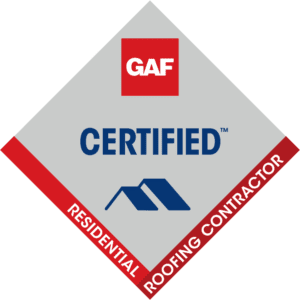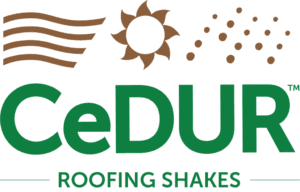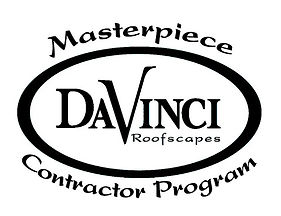“ACV Check” stands for Actual Cash Value Check. In the context of roofing, it refers to the
assessment made by an insurance company to determine the current value of your roof based on
factors such as its age, condition, and depreciation. This assessment helps the insurance company
calculate the amount they will cover for any repairs or replacement needed due to damage.
When you file a roofing insurance claim, an adjuster from the insurance company may perform an
ACV check to evaluate the value of your roof at the time of the damage. The adjuster considers
factors like the age of the roof and the wear and tear it has experienced. The insurance payout is
then typically based on this actual cash value, taking into account depreciation over time.
It’s important to note that the ACV check might not cover the full cost of a roof replacement. If your
policy includes Replacement Cost Value (RCV) coverage, you may be eligible to receive additional
compensation to cover the cost of replacing the damaged roof with a new one. It’s recommended to
review your insurance policy and consult with professionals to fully understand how ACV and RCV
apply to your roofing situation.
Architectural shingles and 3-tab shingles are two common types of roofing materials used in
residential construction. Here’s a breakdown of the differences between the two:
Appearance:
● Architectural Shingles: Also known as laminated or dimensional shingles,
architectural shingles have a textured and layered appearance. They are designed to
mimic the look of natural materials like wood or slate. The overlapping layers create
depth and dimension, enhancing the visual appeal of the roof.
● 3-Tab Shingles: 3-tab shingles have a simpler, flatter appearance. They consist of
three uniform tabs of the same size and shape that create a regular pattern on the
roof.
Durability:
● Architectural Shingles: These shingles are generally thicker and heavier than 3-tab
shingles, which often makes them more durable and better equipped to withstand
harsh weather conditions, including wind, rain, and hail.
● 3-Tab Shingles: While still durable, 3-tab shingles are usually lighter and less robust
than architectural shingles. They may have a shorter lifespan and may be more prone
to damage in extreme weather.
Longevity:
● Architectural Shingles: Due to their thickness and quality, architectural shingles tend
to have a longer lifespan than 3-tab shingles. They can last anywhere from 25 to 50
years or more, depending on the brand and maintenance.
● 3-Tab Shingles: These shingles typically have a shorter lifespan of around 20 to 30
years.
Cost:
● Architectural Shingles: These shingles are usually more expensive upfront due to
their higher quality and aesthetic appeal.
● 3-Tab Shingles: 3-tab shingles are generally more budget-friendly but may need
replacement sooner, which could lead to higher long-term costs.
Variety:
● Architectural Shingles: These shingles come in a wide range of colors, styles, and
patterns, allowing homeowners to choose a look that complements their home’s
architecture.
● 3-Tab Shingles: While they do come in various colors, the design options for 3-tab
shingles are more limited compared to architectural shingles.
Ultimately, the choice between architectural and 3-tab shingles depends on factors such as budget,
aesthetic preferences, and the desired lifespan of the roof. Consulting with roofing professionals and
considering the climate and environmental conditions of your area can help you make an informed
decision that best suits your needs.
Opting for a 50-year shingle, often referred to as a high-performance or extended-lifespan shingle,
comes with several benefits that can make them an attractive choice for your roofing needs. Here
are some of the key benefits of using a 50-year shingle:
Exceptional Durability: 50-year shingles are engineered to withstand the elements and offer
superior durability. They are constructed with high-quality materials and advanced
manufacturing techniques that make them more resistant to weather-related wear and tear,
including wind, rain, UV radiation, and temperature fluctuations.
Longevity: As the name suggests, 50-year shingles are designed to have a longer lifespan
compared to standard shingles. This can result in reduced maintenance and replacement
costs over time, making them a cost-effective choice in the long run.
Increased Weather Resistance: High-performance shingles often have enhanced wind
resistance ratings, which means they are less likely to get damaged or torn off during storms
with strong winds. This can provide added protection to your home and reduce the need for
repairs after severe weather events.
Improved Aesthetics: Many 50-year shingle options are available in a variety of styles, colors,
and textures. This allows you to choose a shingle that complements your home’s
architecture and enhances its curb appeal.
Enhanced Warranty: Manufacturers of 50-year shingles typically offer longer warranties
compared to standard shingles. These warranties can cover a variety of issues, including
manufacturing defects, premature aging, and granule loss. A longer warranty provides peace
of mind and reflects the manufacturer’s confidence in the product’s quality.
Potential Home Value Increase: Upgrading to a high-quality, long-lasting roofing material like
a 50-year shingle can positively impact your home’s resale value. Prospective buyers may be
more willing to pay a premium for a home with a durable and aesthetically pleasing roof that
doesn’t require immediate replacement.
Reduced Environmental Impact: Some 50-year shingle options are designed to be more
environmentally friendly. They might incorporate recycled materials and contribute to the
overall sustainability of your home.
Less Frequent Maintenance: Due to their extended lifespan and durability, 50-year shingles
generally require less frequent maintenance and repairs compared to standard shingles.
It’s important to note that the benefits you’ll experience depend on the specific brand and type of
50-year shingle you choose, as well as proper installation and maintenance. Consulting with roofing
professionals and carefully reviewing product specifications can help you select the best shingle for
your home and budget.
A Public Adjuster can offer several benefits when dealing with insurance claims, particularly in
situations involving property damage. Here are some key advantages of hiring a Public Adjuster:
Expertise and Experience: Public Adjusters are professionals who specialize in evaluating
and negotiating insurance claims. They have in-depth knowledge of insurance policies,
coverage details, and the claims process. Their experience allows them to navigate complex
insurance terminology and procedures effectively.
Maximized Settlements: Public Adjusters work on behalf of policyholders, not the insurance
company. Their goal is to ensure you receive the maximum settlement you’re entitled to
based on your policy coverage and the extent of the damage. They have the expertise to
accurately assess the value of your losses and advocate for fair compensation.
Thorough Documentation: Public Adjusters excel in compiling detailed documentation of the
damage to your property. They create comprehensive inventories, photo records, and written
estimates of repair or replacement costs. This documentation strengthens your claim and
provides evidence to support your case.
Claims Process Assistance: Dealing with insurance claims can be overwhelming, especially
during times of stress after property damage. A Public Adjuster can handle various aspects
of the claims process on your behalf, including paperwork, communication with the
insurance company, and negotiation. This frees you from the administrative burden and
allows you to focus on recovering from the damage.
Faster Resolution: Public Adjusters are well-versed in the claims process and can expedite
the resolution of your claim. Their familiarity with insurance company practices and policies
helps prevent unnecessary delays, ensuring you receive the settlement more efficiently.
Appraisal Expertise: In cases where there’s a disagreement between you and your insurance
company regarding the value of your claim, a Public Adjuster can provide an objective
appraisal. This can lead to a fairer resolution without resorting to costly legal action.
Personalized Attention: Public Adjusters work one-on-one with clients, offering personalized
attention and tailoring their services to your specific needs. They prioritize your interests and
strive to achieve the best possible outcome for your claim.
Negotiation Skills: Public Adjusters are skilled negotiators. They know how to effectively
communicate with insurance company adjusters and representatives to advocate for your
interests. Their negotiation skills can result in higher settlements than you might achieve on
your own.
Access to Network: Public Adjusters often have established relationships with contractors,
restoration experts, and other professionals involved in property repairs. They can provide
referrals to reliable service providers to help you get your property back to its pre-loss
condition.
Reduced Stress: Dealing with an insurance claim can be emotionally taxing, especially after
experiencing property damage. Hiring a Public Adjuster can alleviate stress by handling the
complex and time-consuming aspects of the claim process, allowing you to focus on
rebuilding and moving forward.
Before hiring a Public Adjuster, it’s wise to research and choose a reputable and licensed
professional with a track record of successful claims. They typically work on a contingency fee
basis, which means their payment is a percentage of the settlement amount, ensuring that they are
motivated to maximize your compensation.
Re-roofing, also known as roof replacement, is a significant home improvement project that involves
removing your old roof and installing a new one. Here’s an overview of the re-roofing process and
what you can expect:
Initial Assessment:
● A roofing contractor will visit your property to assess the current condition of your
roof. They will inspect for signs of damage, leaks, and overall wear and tear.
● The contractor will discuss your options for materials, styles, and colors based on
your preferences and budget.
Choosing Materials:
● Decide on the type of roofing material you want for your new roof. Options may
include asphalt shingles, metal roofing, wood shingles, or other specialty materials.
● Consider factors such as durability, lifespan, aesthetics, and local weather
conditions.
Permits and Paperwork:
● Depending on your location and the extent of the project, you may need to obtain
permits from your local municipality. Your chosen contractor should assist you with
this process.
Scheduling the Project:
● Once you’ve selected a contractor and agreed on the details, they will provide you
with a timeline for the project. Re-roofing timelines can vary depending on factors like
the size of your home and weather conditions.
Preparation:
● Before work begins, the contractor will take steps to protect your property, such as
placing tarps to catch debris and covering landscaping.
● They will also ensure proper safety measures are in place for both workers and
residents.
Removal of Old Roof:
● The existing roofing material will be removed, exposing the roof decking. Any
damaged or deteriorated sections will be repaired or replaced.
Inspection and Repair:
● Contractors will inspect the roof decking for any rot or damage. If necessary, they will
make repairs to ensure a solid foundation for the new roof.
Installation of New Roof:
● Underlayment: A waterproof underlayment will be installed to provide an additional
layer of protection against leaks.
● Installation: The new roofing material, whether it’s shingles, metal panels, or another
type, will be installed according to the manufacturer’s guidelines and industry best
practices.
Flashing and Ventilation:
● Flashing, which prevents water intrusion at vulnerable areas like chimneys and vents,
will be installed or replaced as needed.
● Proper ventilation systems will be installed to ensure air circulation and prevent
moisture buildup in your attic.
Clean-Up:
● Contractors will thoroughly clean up the work area, removing debris and nails. A
magnet may be used to pick up any stray nails that could pose a safety hazard.
Final Inspection:
● The roofing contractor will perform a final inspection to ensure that the new roof
meets quality standards and is properly installed.
Warranty and Maintenance:
● You’ll receive information about any warranties on materials and workmanship.
Follow any recommended maintenance guidelines to prolong the life of your new
roof.
Remember that re-roofing is a substantial investment, and working with a reputable and experienced
roofing contractor is crucial to ensuring a successful outcome. Keep open communication with the
contractor throughout the process and address any concerns or questions you may have.
Filing an insurance claim can potentially lead to an increase in your insurance premiums, but it’s not
a guarantee. Whether your insurance rates increase depends on several factors, including the nature
of the claim, your insurance company’s policies, and your overall claims history. Here’s how it works:
**Type of Claim: Some claims are more likely to result in a premium increase than others.
Claims that are beyond your control, such as damage caused by natural disasters, might
have less impact on your premiums compared to claims related to negligence or preventable
incidents.
Frequency of Claims: Insurance companies generally track your claims history over a specific
period, often several years. If you’ve filed multiple claims within a short time frame, it could
signal to the insurer that you’re a higher-risk policyholder, which might lead to premium
increases.
Severity of Claims: The amount of the claim payout also matters. Larger claims may have a
more significant impact on your rates compared to smaller claims.
Your Insurance Company’s Policies: Different insurance companies have varying policies
regarding premium increases after claims. Some insurers offer “claims forgiveness” for the
first claim, meaning your rates won’t increase initially. Others might have stricter policies.
State Regulations: Insurance regulations can vary by state, and some states have rules that
limit or regulate how much an insurance company can increase premiums after a claim.
Long-Term Impact: An increase in your premium might not be temporary; it could last for
several years. The specific duration can vary by insurer and the nature of the claim.
Your Personal History: Your personal history as a policyholder can also influence whether
your rates increase. If you have a long history with your insurance company, good credit, and
a clean claims record, they might be more lenient in terms of rate adjustments.
Consider Your Deductible: Before filing a claim, consider your deductible. If the cost of
repairs is only slightly above your deductible, it might not be worth filing a claim, as you
might pay more in increased premiums than what you receive in a payout.
Navigating the insurance process can be complex, especially when dealing with property damage
claims. Here’s a step-by-step overview of what to expect during the insurance process:
Damage Assessment:
● After discovering damage to your property, document the extent of the damage
through photos and notes.
● Contact your insurance company as soon as possible to report the damage and start
the claims process.
Initial Contact:
● When you contact your insurance company, they will assign a claims adjuster to your
case. The adjuster will be your main point of contact throughout the process.
Claim Investigation:
● The claims adjuster will schedule a visit to inspect the damage in person. They will
assess the cause and extent of the damage and determine if it’s covered under your
policy.
Documentation:
● Provide any documentation the insurance company requests, including photos, repair
estimates, and any relevant receipts.
● Keep records of all communication with your insurance company, including emails
and phone calls.
Claim Evaluation:
● The insurance company will review the adjuster’s assessment and determine the
coverage and compensation you’re eligible for based on your policy terms.
Claim Approval:
● If your claim is approved, the insurance company will provide you with a settlement
offer detailing the amount they will pay for the repairs or replacement, minus any
deductibles.
Review the Settlement Offer:
● Carefully review the settlement offer to ensure it accurately reflects the damage and
needed repairs. If you have concerns, discuss them with your adjuster.
Accepting the Settlement:
● If you agree with the settlement offer, you’ll need to sign and return the necessary
paperwork to formalize the acceptance.
● Keep in mind that accepting the settlement offer usually means you’re agreeing to
close the claim, so make sure you’re satisfied before proceeding.
Payment:
● Once the insurance company receives the signed paperwork, they will issue payment
for the approved amount. The payment might be made to you, your mortgage lender
(if applicable), or the repair contractor, depending on the situation.
Repair Process:
● Coordinate with contractors to schedule the repairs. Ensure they provide detailed
estimates and that their work aligns with the insurance company’s assessment.
Inspection of Repairs:
● After the repairs are completed, the insurance company might send the adjuster back
to your property to verify that the repairs were done correctly and in line with the
claim.
Finalize the Claim:
● Once repairs are verified, the claim will be officially closed, and the process will
conclude.
Additionally, keep in mind that the specific steps and timelines can vary depending on your insurance
company, the nature of the damage, and your policy terms. Lucky for our customers, our Public
Adjuster, Matt Fainter, takes all of the heartache out of the process by standing in for you in all the
previously mentioned steps. Just another way we set ourselves apart as the Gold Standard in
Roofing.
Geographical rate increases, also known as area-based or regional rate adjustments, are
adjustments made to insurance premiums based on the location of the insured property. In the
context of insurance claims for roofing, these adjustments take into account the specific risks
associated with the geographic area where your property is located.
When it comes to roofing insurance claims, geographical rate increases can be influenced by several
factors:
Weather Patterns: Certain areas are more prone to specific weather events, such as
hurricanes, tornadoes, hailstorms, or heavy snowfall. These weather patterns can increase
the likelihood of roof damage, leading to higher claim frequencies in those regions.
Climate Conditions: Regions with extreme temperature fluctuations or high humidity levels
might experience more wear and tear on roofing materials over time, potentially resulting in
more frequent claims for repairs or replacements.
Natural Disasters: Locations that are susceptible to natural disasters, like coastal areas
prone to hurricanes or earthquake-prone zones, can experience more frequent and severe
damage to roofs, leading to higher claims.
Environmental Factors: Certain areas have environmental elements that can impact roofing
materials, such as saltwater exposure near coastlines or high levels of air pollution in urban
settings. These factors can contribute to faster material degradation.
Local Building Codes: Some areas have stricter building codes and regulations for roofing
materials due to the need to withstand specific local conditions. Using compliant materials
may impact insurance rates.
Roofing Materials and Styles: The choice of roofing materials can influence rates. For
instance, areas prone to wildfires might have higher premiums for homes with combustible
roofing materials.
Repair and Replacement Costs: Geographical differences in labor and material costs can
affect how much insurers pay out for claims, which can impact premium rates.
Historical Claim Data: Insurance companies analyze historical claim data to assess risk
levels in specific regions. If a certain area has a history of frequent and expensive roofing
claims, insurance rates might be adjusted accordingly.
It’s important to note that insurance premiums are typically calculated based on a combination of
individual factors and regional considerations. When you file a claim for roofing damage, especially
in an area with a history of claims related to roofing issues, it might contribute to an increase in
premiums for that location.
Ridge: The highest point where two roof sections meet, forming a peak. It’s
important for proper ventilation and to prevent water from pooling.
Vent: An opening designed to allow air to circulate within the roofing system.
Vents help regulate temperature and moisture, maintaining the health of the roof
and the space beneath it.
Hip: The inclined angle formed by the meeting of two roof slopes. This is usually
seen on houses with more complex roof designs, like those with multiple
sections.
Soffit: The underside of the roof overhang, connecting the roof to the side of the
building. It’s important for ventilation and aesthetics.
Fascia Board: A horizontal board along the edge of the roof, typically where the
gutters are attached. It provides a clean appearance and helps protect the roof’s
edges.
OSB: Oriented Strand Board (OSB) is a type of engineered wood often used as
roof decking. It provides a solid base for shingles or other roofing materials to be
applied.
Gutters: Channels along the edge of the roof that collect rainwater and direct it
away from the building’s foundation, preventing water damage.
Pitch: The steepness or angle of the roof. It’s important for water drainage and
can influence the type of roofing materials that work best.
Ice and Water Shield: A protective membrane installed on the roof to prevent
water from infiltrating in areas prone to ice dams and heavy rain. It adds an extra
layer of defense against leaks.







